Last Chance to Catch NYC's Holiday Notalgia Train
We met the voices of the NYC subway on our nostalgia ride this weekend!


Tucked away in the northeast section of the Bronx is the lesser-known Pelham Bay Park, a reminder of the borough’s bucolic past. Former Parks Commissioner Robert Moses transformed the woodland area into a functioning park and recreational facility, complete with playgrounds, a golf course and a racetrack, but it has a long history dating back to before the Revolutionary War.
Here are ten secrets of Pelham Bay Park in the Bronx.
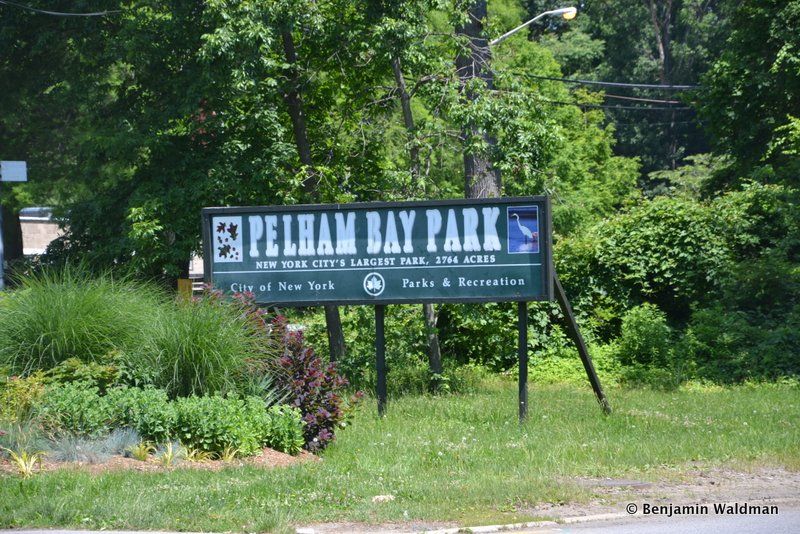
According to the New York City Parks Department, Pelham Bay Park is the largest public park in the city, measuring in at almost 2772 acres, with part of it extending into Westchester County. The park’s area that is within the Bronx is three times the size of Manhattan’s Central Park, which comes in at slightly over 840 acres. The second and third largest parks in New York City are Greenbelt in Staten Island and Van Cortlandt Park in the Bronx, which are 1778 and 1146 acres respectively.
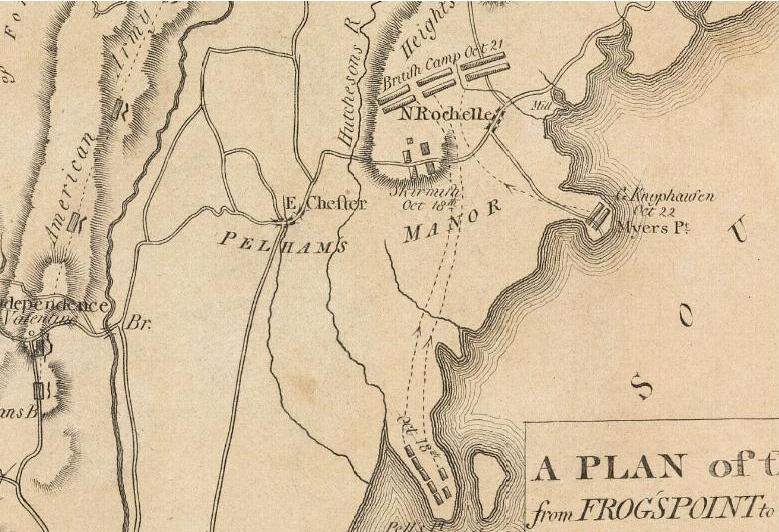
Photo via Wikimedia Commons/Samuel Lewis – Originally from the Boston Public Library
During the Revolutionary War, part of the current Pelham Bay Park area served as an important site of the Battle of Pell’s Point between the British and American soldiers. On October 18, 1776, the Continental Army, led by Colonel John Glover faced off against the British and Hessian army of approximately 4000, led by General William Howe. According to the National Parks Service, Howe and his army landed in Throgs Neck on October 12, less than a week before the skirmish. The British were initially met by 25 members of the Continental Army while marching toward Kingsbridge.
Six days later, General Howe’s troops were led by British officers Henry Clinton and Charles Cornwallis, from Throgs Neck to Pell’s Point, where they fought against Colonel Glover’s troop of 750 American soldiers. The Americans continued to fight and retreated to Yonkers when the number of British soldiers became overwhelming. The work of Glover and the American soldiers at the Battle of Pell’s Point allowed George Washington and his troops to escape to White Plains. Today the site is marked by Glover’s Rock, named after the American Colonel.
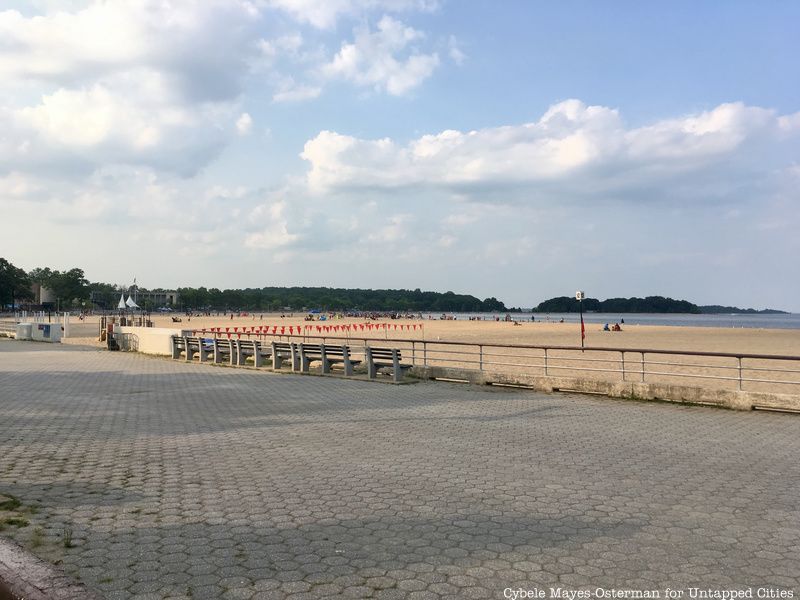
In the 20th century, Parks Commissioner Robert Moses carried out a number of outdoor public projects to promote the beautification and betterment of New York City. One such project was the man-made Orchard Beach, which Moses planned as part of Pelham Bay Park. The Orchard Beach Project cost approximately $8 million and included an accompanying parking lot and 90,000 square foot bathhouse complex. The “landfill-fortified beach” was extended by 1.25 miles by filling in the water in LeRoy’s Bay with fill from Sandy Hook, New Jersey and the Rockaways. The Riviera of the Bronx” opened in 1936 and remains the only public beach in the borough.
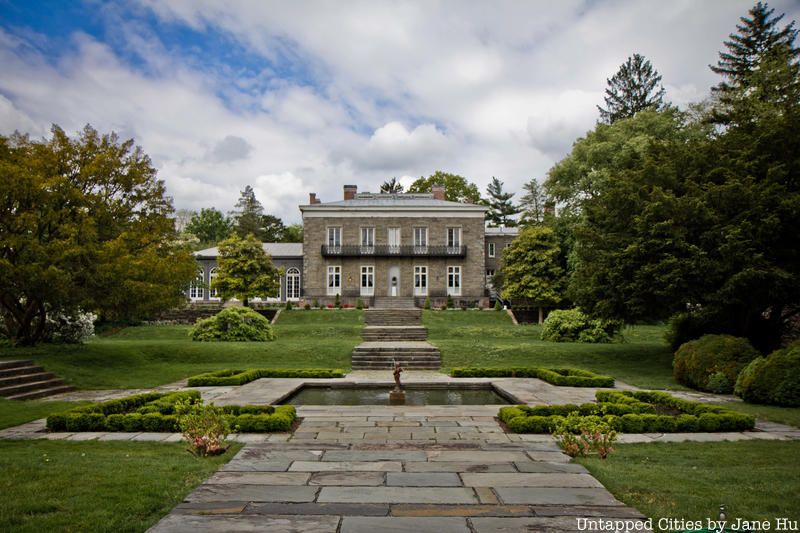
The Bartow-Pell Mansion Museum opened in 1946, but before then, the land and its historic home belonged to both the Pell and Bartow families. The history of the mansion began in 1654, when Thomas Pell, an English-born physician, acquired 9000 acres of land from his agreement with the Siwanoy Native Americans. This agreement was marked by a “Treaty Oak,” a somewhat controversial tree (read here why). In 1790, nearly 140 years after Pell acquired the land, it was sold to John Bartow, the husband of Thomas Pell’s descendant, Ann Pell. The original manor that was built on the estate was most likely destroyed during the American Revolution, but a new one was built in 1842 and was owned by John Bartow’s grandson, Robert.
Forty years later, the mansion was abandoned, but was later used by a number of people and groups, including the International Garden Club and Fiorello LaGuardia, who used it as his summer office. In 1946, the mansion was refurbished with period objects and was open to the public as the Bartow-Pell Mansion Museum.
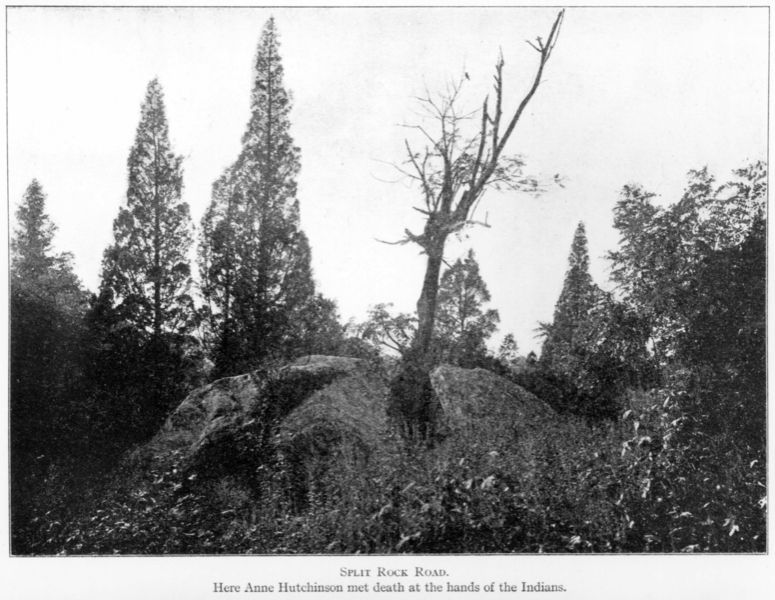
1911 Photo from NYC Parks
Up until 1639, the Siwanoy Native Americans were indigenous to the current Pelham Bay Park area, as they had been since 1000 AD. According to the NYC Parks Department, the area provided the Siwanoy with plentiful amounts of deer, turtle and sturgeon. In 1639, the Dutch West India Company purchased the land and disrupted the Siwanoy’s otherwise peaceful existence. Groups of people attempted to settle the land, but the Siwanoy retained control despite the attempts. Anne Hutchinson, a Puritan woman from Massachusetts tried to start a colony in the area after she was banned for her involvement in the Antinomian Controversy, causing a religious schism in her community.
In 1642, Hutchinson moved to Split Rock with members of her family and some servants, unaware of the active Native American presence in the area. The Hutchinson family were caught in the crossfire of unrest in the New Netherlands community, with the Siwanoy and Dutch settlers feeling a mutual disdain for each other. This culminated in Kieft’s War, named for the treacherous Dutch governor. In 1643, Hutchinson was killed by the Native Americans at Split Rock, which is reportedly where she and her daughter were found hiding.
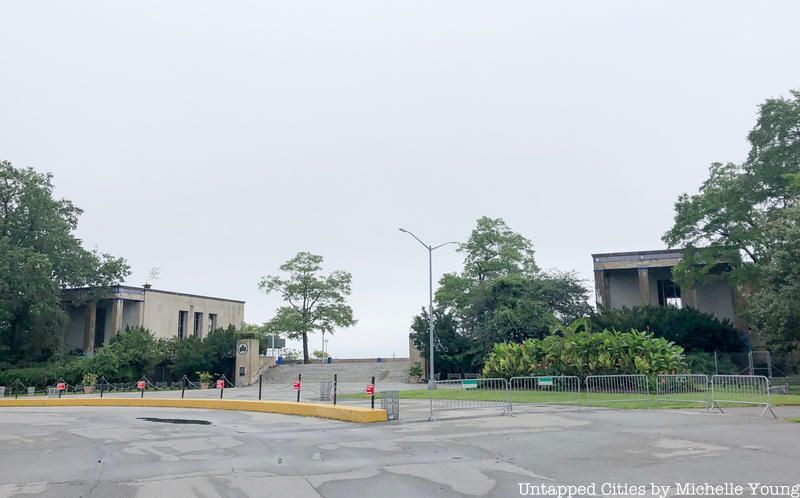
According to the Friends of Pelham Bay Park website, the park was home to a Naval training base from 1917 to 1919. At its peak, there were 4777 sailors at the Rodman’s Neck base. One of the Naval trainees was famous actor, Humphrey Bogart, whose last name consequently means “orchard” like the park’s beach. As a young adult, Bogart joined the Navy and attended the Naval Reserve Training Station in Pelham Bay Park. After serving for a few years, Bogart was honorably discharged from active service on June 18, 1919 and subsequently went on to have a successful acting career.
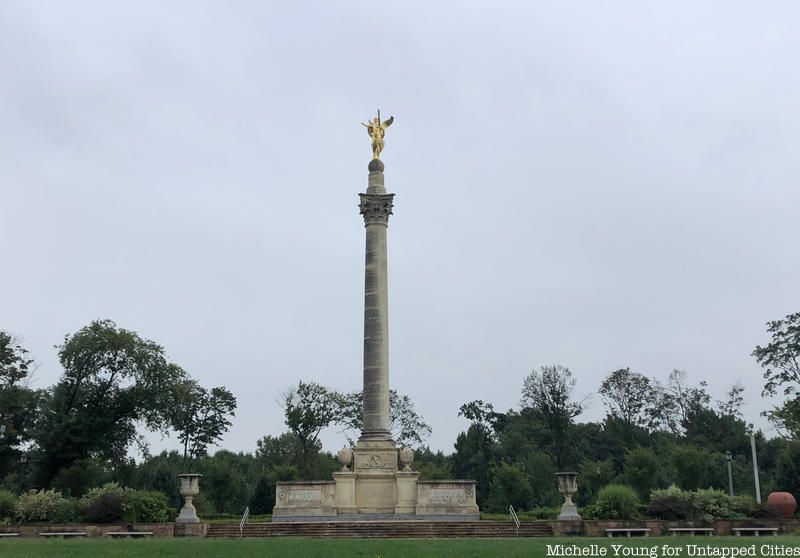
Architect and landscape architect, John J. Sheridan, designed the Bronx Victory War Memorial in partnership with sculptors Belle Kinney and Leopold Schultz. The memorial honors the 947 soldiers from the Bronx who fought and died in World War I. Sheridan had a personal connection to the project, having served as an infantry captain during the war. The memorial itself includes a plaza and terrace with a 75-foot tall Corinthian column, topped with a bronze victory figure. The plaque at the statue’s base reads “A Grateful City Erected This Shaft to the Glorious Memory of its Bronx County Sons Who Gave Their Lives For Their Country in the World War.” The memorial was erected in 1932 and dedicated in September 1933. Local officials attended and spoke at the ceremony, including Mayor John P. O’Brien, Bronx Parks Commissioner Thomas J. Dolen and former acting mayor Joseph V. McKee.
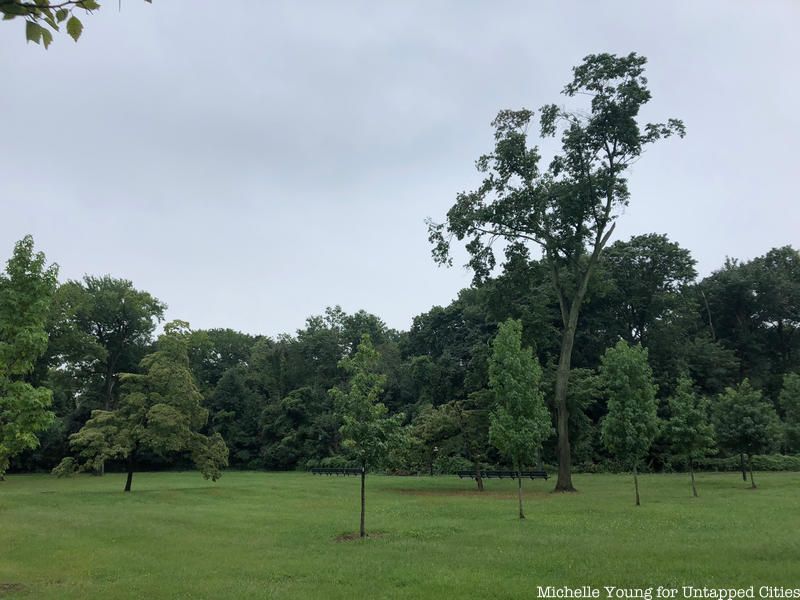
According to the New York Times, from 1986 to 1995, “at least 65 dead bodies were discovered” in Pelham Bay Park. In the article, author and historian Lloyd Ultan, says that its large size and wild growth made it perfect for disposing bodies because “it would take a long time for anybody to find anything there that shouldn’t be there.” During the ten years, bodies and body parts were found floating in water or covered with blankets. Some of the bodies were reportedly linked to the mob.
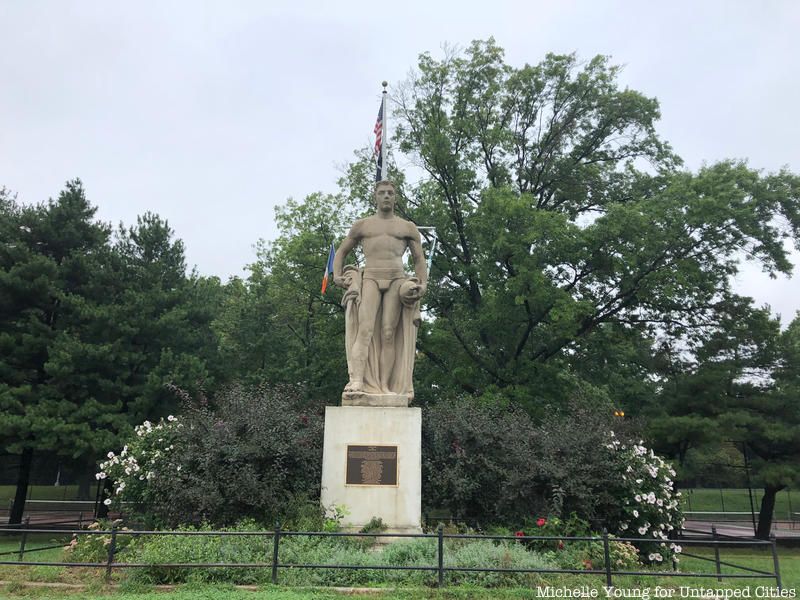
Overlooking the Pelham Bay Park track is the American Boy statue, a Greek-style statue of a nude man sheathed in a cloth. Part of the inscription on the statue reads, “the piece was intended to reflect an ideal of youth” and is dedicated to a man named Isaac Rice. He was born in Germany and was accomplished in a number of fields, including business, music, writing, inventing and chess. After his death in 1917, his wife, Julia, donated $1 million to erect a recreational facility in memory of her husband.
The facility opened in the 1920s, and included “Olympic-inspired friezes” by Charles Cary Rumsey and the American Boy statue. However, the city could not afford the facility’s upkeep, and it was demolished in 1989 after it was deemed hazardous to the public. In 2002, the statue was restored and placed at the entrance of the track field.
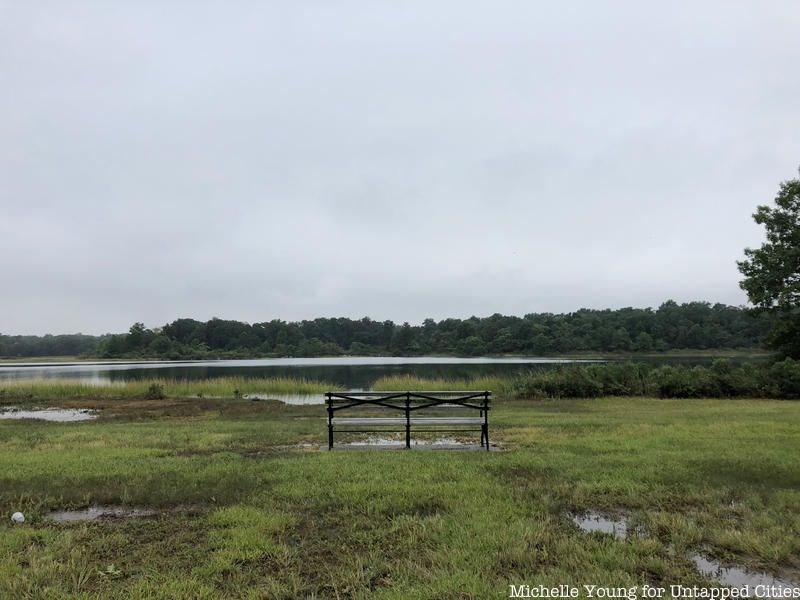
Kazimiroff Nature Trail got its name from Dr. Theodore Kazimiroff, who was a dentist by trade. Kazimiroff was dedicated to preserving the delicate ecosystems that existed and still exist in the Bronx, including Split Rock in Pelham Bay Park. In 1981, a year after he died, the section between Fordham Road and Allerton Avenue was renamed the Dr. Theodore Kazimiroff Boulevard. His nature trail in the park runs through 189 acres of Hunter Island, which boasts trees such as the tall Norway spruce and white pines that are homes to great horned owls.
Next, check out The Top 12 NYC Nature Trails For Fall (and Year Round) Exploration and Top 5 Places to Find the Outdoors in the Bronx, the Borough with the Most Parks in NYC. Connect with the author @jen_bagcal.
Subscribe to our newsletter